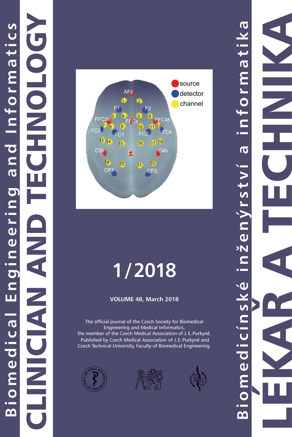A COMPARISON OF THE QUALITY OF DENTAL CROWNS FROM TI-6AL-4V AND COCR ALLOYS MADE WITH SLM TECHNOLOGY
Keywords:
dental crowns, CoCr alloy, Ti-6Al-4V alloy, quality of production, SLM technology,Abstract
At present, dental replacements are more and more often being made with the use of additive manufacturing. In dentistry, selective laser melting (SLM), which enables the manufacturing of dental replacements from the alloys CoCr and Ti-6Al-4V, is the technology most used. With comparable costs for production, Ti-6Al-4V has significantly better biocompatibility, better mechanical properties and lower weight in comparison with an alloy from CoCr. The goal of the submitted study is a comparison of the precision of production of dental crowns from CoCr alloy and Ti-6Al-4V alloy manufactured on an Mlab cusing R machine. For purposes of the study 30 crowns were manufactured from CoCr alloy and 30 from Ti-6Al-4V alloy on an Mlab cusing R machine, with the settings recommended by the manufacturer. After production the crowns were scanned using a Medit Identica dental scanner. The obtained data were subsequently modified and compared with a nominal CAD model in the Volume Graphics VGStudioMAX 2.2 software. The results are deviations on the level of 95% of coverage of the compared work with nominal geometry for all evaluated groups. The obtained deviations were subsequently processed statistically for the purpose of determining the statistical significance of the difference between the materials.Downloads
Published
Issue
Section
License
Copyright (c) 2018 Viktoria Rajtukova

This work is licensed under a Creative Commons Attribution 4.0 International License.
Authors who publish with this journal agree to the following terms:
- Authors retain copyright and grant the journal right of the first publication with the work simultaneously licensed under a Creative Commons Attribution License (https://creativecommons.org/licenses/by/4.0/) that allows others to share the work with an acknowledgment of the work's authorship and initial publication in CTJ.
- Authors are able to enter into separate, additional contractual arrangements for the non-exclusive distribution of the journal’s published version of the work (e.g., post it to an institutional repository or publish it in a book), with an acknowledgment of its initial publication in this journal.
- Authors are permitted and encouraged to post their work online (e.g., in institutional repositories or on their website or ResearchGate) prior to and during the submission process, as it can lead to productive exchanges.
CTJ requires that all of the content of the manuscript has been created by its respective authors or that permission to use a copyrighted material has been obtained by the authors before submitting the manuscript to CTJ. CTJ requires that authors have not used any copyrighted material illegally, as for example a picture from another journal or book, a photo, etc. It is the author’s responsibility to use only materials not violating the copyright law. When in doubt, CTJ may ask the authors to supply the pertinent permission or agreement about the use of a copyrighted material.
The opinions expressed in CTJ articles are those of authors and do not necessarily reflect the views of the publishers or the Czech Society for Biomedical Engineering and Medical Informatics.


